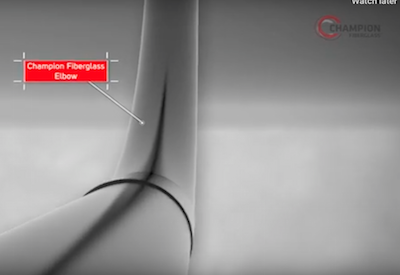A New Kind of Privacy for the Next Generation Smart Home: Why Every Smart Home and Office Will Want a Secure LiFi Network

July 15, 2019
By Sarah Scace
As the smart home grows in popularity, IoT and Wi-Fi security remain front of mind for consumers. The CPX 360 survey reports that more than two-thirds (70%) of consumers are concerned about the lack of security they have from hackers who might interfere or snoop on smart devices in the home.[1]
The security of light
LiFi can provide unprecedented privacy while offering robust, fast and reliable wireless communications. For the same reason that LiFi prevents interference with neighbouring networks, it also offers much superior privacy in the home. LiFi signals are not accessible to a nearby resident, business or passing member of the public, because LiFi doesn’t pass through walls. This unique quality of LiFi means users can secure their networks by simply drawing the curtain and locking the door. This LiFi feature makes wireless security easily manageable for everyone. In times where devices, cameras and microphones can be hacked using simple online tools, LiFi offers real peace of mind.
The below illustration, demonstrates the different characteristics of Wi-Fi and LiFi. You can see the user on the left using the Wi-Fi network has a connection that is vulnerable to the neighbouring user. This quality of Wi-Fi leaves the user susceptible to Man-in-the-Middle attacks, theft of private information and interference. In contrast, the user under the LiFi network can be confident they are using a wireless connection that is not accessible to the neighbouring user or other passing individuals. As simple example, 96% of new car owners are vulnerable to relay car theft where thieves boost the RF signal coming from the wireless key and drive away in the car.[2] This would be is impossible with LiFi.
Wireless “light safes” using LiFi
With LiFi, you can also host a private wireless network in your home that is not connected to the Internet. This wireless network could hold your most private digital items such as passwords, family photographs, financial information and would be virtually un-hackable. Imagine a desk lamp or a living room pendant lamp discretely holding your most important digital information which is only accessible by light, and only you know it’s there — a digital safe in your home for the digital age.
LiFi in enterprise environments
LiFi significantly improves wireless security in the home as well as offering protection for many kinds of other wireless environments such as enterprise office settings. Sectors such as finance, legal pharmaceutical, intelligence and defence industries have very robust wireless security policies that make maintaining Wi-Fi networks very challenging and, at times, impossible. LiFi can provide the same privacy to these environments and allow for secure wireless communications where it was not possible before.
Organizations can exploit more advanced LiFi security features such as asset tracking, geo-fencing, behavioural analytics and end user device hardware encryption. This level of security is possible because each light in a LiFi network has its own unique identifier, which allows network managers to track users very precisely and analyse their behaviour.
LiFi not only has physical properties that inherently makes the technology more secure, it also presents massive opportunities for greatly enhanced control over information sharing based on location and user behaviour. LiFi provides the security of a wired connection with the freedom of a fast, robust and reliable wireless connection.
Misconceptions and common questions
There are various misconceptions and common questions about LiFi. The following are common questions that relate to the home. You can read more frequency asked questions here https://purelifi.com/faq/
If light doesn’t go through walls, how can you stay connected when you move around your home?
Light does not go through walls; however, you can network your lights to handover between access points. Which means you can move around your home and as long as you see the light you remain connected.
Does LiFi work with the light off?
If all power to a light is turned off, then there is no LiFi. However, LiFi technology can be enabled to dim low enough that a room will appear dark and still transmit data. You can also use invisible portions of the light spectrum called Infra-Red to transmit high-speed data.
Does LiFi work outdoors in sunlight?
LiFi can operate in daylight and even in direct sunlight conditions, as the modulated light can still be detected. LiFi relies on detecting the fast changes in light intensity and not on the absolute or slowly varying levels caused by natural disruptions in daylight or sunlight. LiFi technology modulates the light at very high rates, and the sunlight is constant light and therefore can be filtered out at the receiver.
Is LiFi a Line of sight technology?
Light bounces off of surfaces, and therefore LiFi is not strictly a line-of-sight technology.
LiFi is a cellular communication system, and the data rate is not dependent on the line of sight but on the signal quality at the device. Signal quality can be defined by the ratio of the desired data vs any interfering data and noise.
Sarah Scace leads Marketing & Communications at pureLiFi. Sarah has more than 10 years experience working with start-ups and supporting the commercialisation of research and technology. This article was first published online by pureLifi; http://www.linkedin.com/pulse/new-kind-privacy-next-generation-smart-home-sarah-scace/
Notes
1. The Connected Home is Growing: WiFi Router Outranks Smartphone as #1 Technology US Adults Can’t Live Without for More Than One Day; www.iqor.com/press/cpx360-survey-part-2
2. “Relay car theft – UK drivers at risk from having car hacked, but here’s how to avoid it,” www.express.co.uk/life-style/cars/889437/stolen-car-theft-relay-hack-what-is-it-how-to-avoid-it















